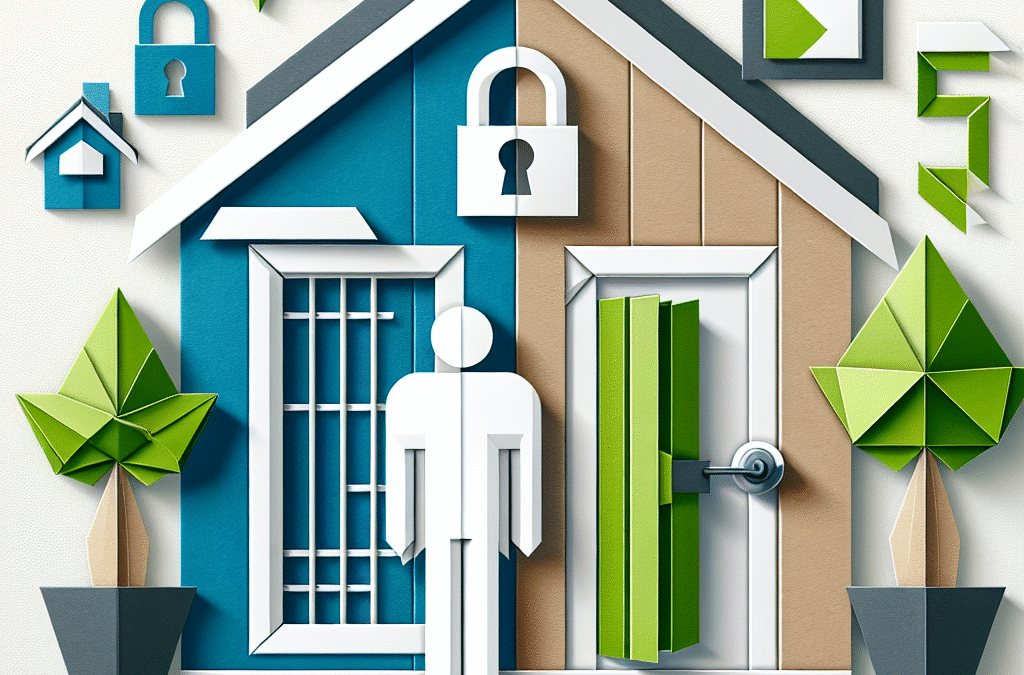Security Versus Convenience
Welcome to the Real Estate Espresso podcast, your morning shot of what’s new in the world of real estate investing. I’m your host, Victor Menasce. On today’s show, we’re talking about the trade-off between security and convenience. Your phone is a device that has so much knowledge about you embedded within it. How long before the very devices that we rely upon to act as our communication device, our camera, our entertainment screen, our wallet, and the key to unlocking the entrance to our home becomes too much of a liability? The epidemic of identity theft has been problematic for some time.
It used to be the case that identity theft could allow someone maybe to get a credit card in your name. So the question is, what do you do as a real estate investor? What do you need to know to protect your properties? How do you prevent someone from entering a building who’s not authorized to do so? Electronic building access is usually permitted through one of several means. It could be through a four-digit code, an RFID card, or a FOB. Or it could be through electronic authentication with an app running on a smartphone, or the good old fashioned way using a physical key. All of these systems have the potential to be compromised. People can share a four-digit code with the wrong person. Someone can copy a metal key. An access card and a smartphone can be stolen.
There’s several lines of defense that are important. Number one is preventing unauthorized access but number two, maintaining enough evidence to identify a criminal after the fact, if they have managed to get through. The method that provides access to the building should be separate from the one that provides access to individual apartments. If the perimeter of the building is compromised, we don’t want that same individual to automatically gain access to a unit.
When we think about smart building access, we want to ensure that residents feel safe and that this feeling of safety is in fact, not just a feeling, but supported in reality. There is a plethora of new products entering the market when it comes to electronic access. Many of these companies have a very short time in the market. When you make an investment in a building, the life cycle of the building is measured in decades. You don’t want to face a situation where a lock fails and the company that supplied them is out of business and you can’t get replacement parts.
This is why I believe it’s important to stick with a few of the larger main line suppliers who have a sufficient installed base and enough longevity in the market that you can count on them to provide parts for years to come. Even then, you’ll want to carry an inventory of spare parts on-site, since lead times can never be guaranteed. Now in the old days, when a tenant moved out, you would hire a locksmith who would have the lock rekeyed in time for the new tenant to arrive. Those days are over.
Someone with a phone combined with facial recognition could provide enough security to ensure the phone doesn’t get compromised. That’s a form of two-factor authentication that can reduce the risk. But then we’re seeing AI-generated likenesses of real people that are incredibly realistic. It’s fair to say that you can no longer trust what you see. AI-generated images, especially deepfakes and these highly realistic synthetic faces, pose a significant and growing threat to some smartphone facial recognition systems. Though the most advanced systems have implemented some countermeasures to mitigate this, these images are a threat because AI can create incredibly realistic and convincing facial images. And even short videos that are indistinguishable from real photos or videos to the human eye.
Some facial recognition systems look for facial movement that a static image can’t mimic. But AI is increasingly able to generate animation of facial features, like small muscular twitches that can fool humans. And they can also fool facial recognition systems. These are some of the most effective countermeasures. Systems like Face ID use specialized hardware. They create a detailed three-dimensional depth map of your face. A flat AI-generated image or video lacks this crucial three-dimensional depth information. Some use infrared imaging capturing an infrared image of the face can reveal details like skin texture and subtle heat signatures that are difficult to replicate with an AI image.
There are techniques to analyze subtle involuntary facial movements, eye blinks, little twitches, changes in facial expression that are characteristic of a live human being. Although AI-generated images are increasingly able to replicate those small nuanced movements. Some systems require the user to be looking directly at the phone. Combining facial recognition with other biometrics, like fingerprints or some kind of password, would potentially add another layer of security.
The fact is, in the world of AI deepfakes, the security of your buildings and apartments could be increasingly in question. If someone breaks into your building and harms a tenant, what is the liability to you as a landlord? Will your insurance cover such a lawsuit? In a named peril policy, it’s almost guaranteed you’re not going to be insured. Smart building systems are increasingly prevalent. And they’re immensely convenient, but are they secure? How do you perform an evaluation to know whether what you’re buying is the right system? These are more questions than answers. And even if you had the answer today, who knows whether that answer would still be true in a year, or a month or a week. The capability of AI systems is growing at an exponential rate, something you significantly want to perform due diligence on.
As you think about that. Have an awesome rest of your day. Go make some great things happen. And we’ll talk to you again tomorrow.
Stay connected and discover more about my work in real estate and by visiting and following me on various platforms:
Real Estate Espresso Podcast:
- 🎧 Spotify: The Real Estate Espresso Podcast
- 🌐 Website: www.victorjm.com
- 💼 LinkedIn: Victor Menasce
- 📺 YouTube: The Real Estate Espresso Podcast
- 📘 Facebook: www.facebook.com/realestateespresso
- 📧 Email: podcast@victorjm.com
Y Street Capital:
- 🌐 Website: www.ystreetcapital.com
- 📘 Facebook: www.facebook.com/YStreetCapital
- 📸 Instagram: @ystreetcapital



